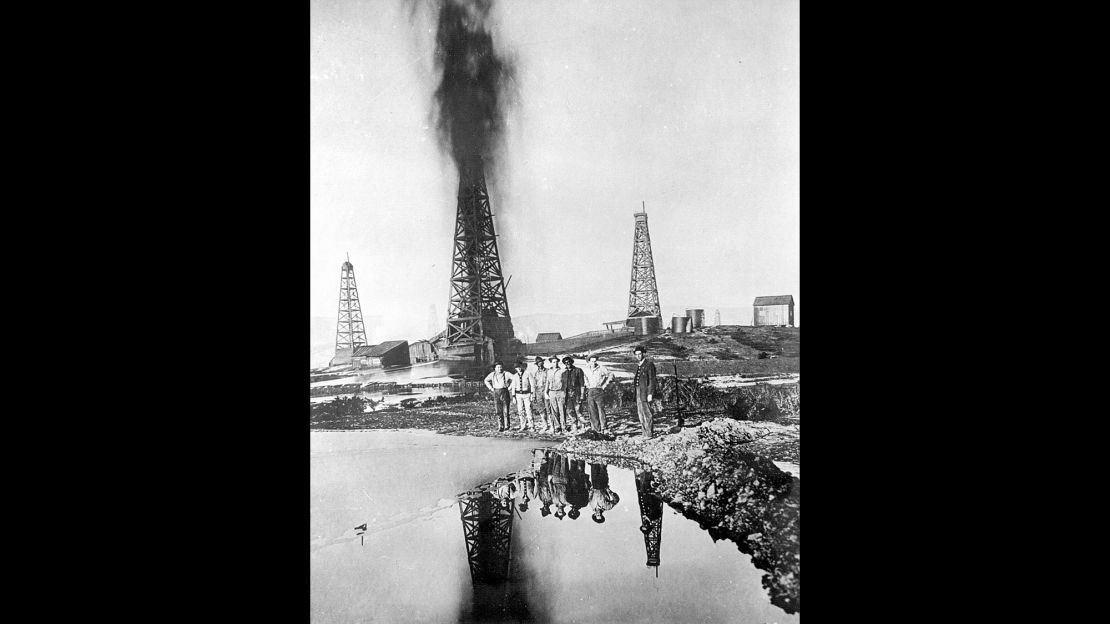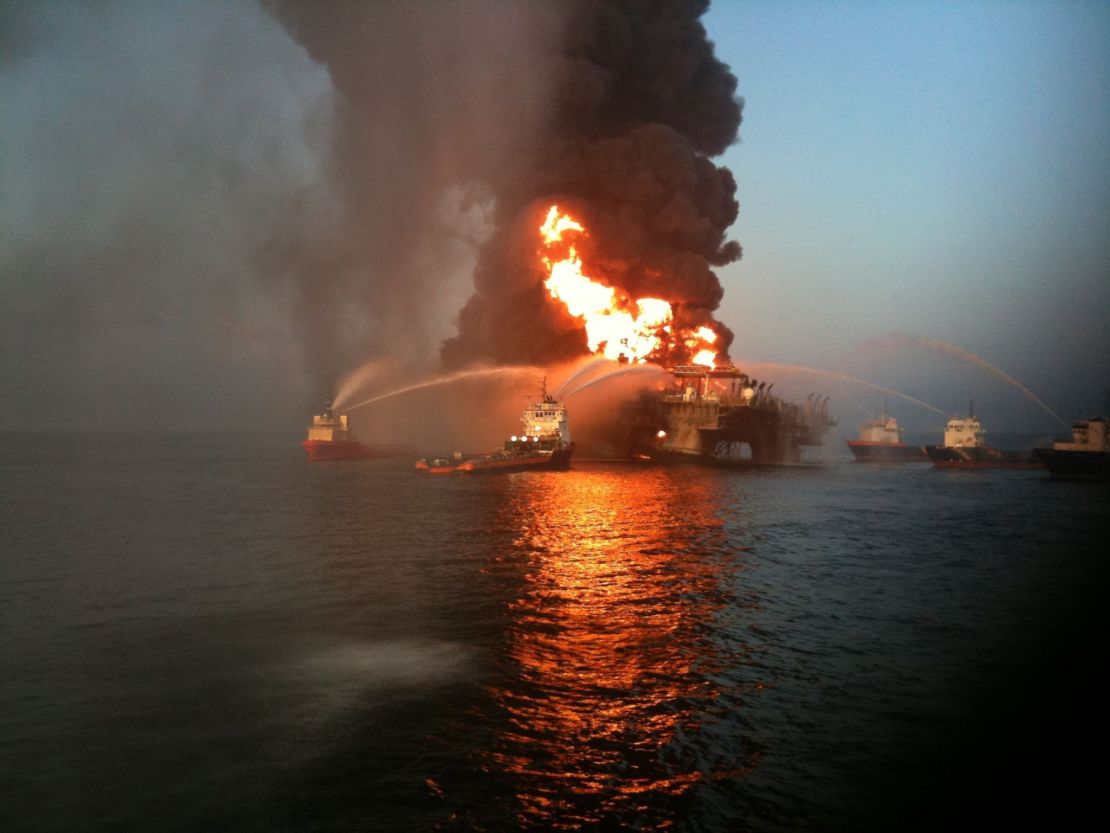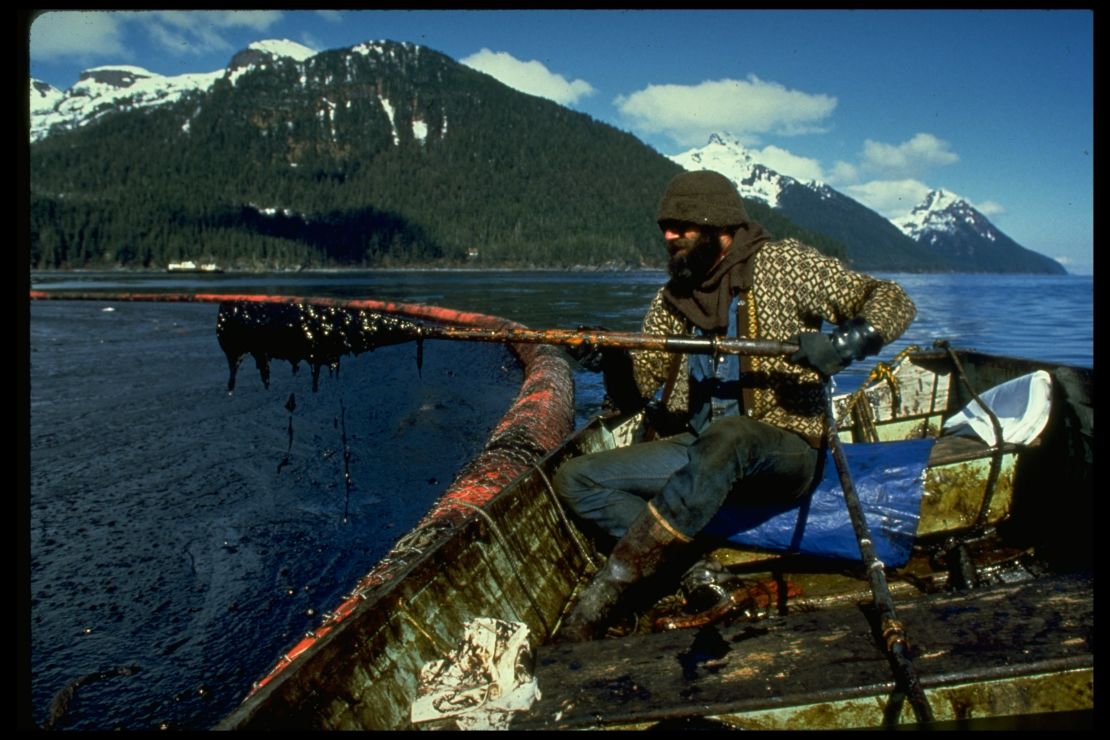Story highlights
The Santa Barbara oil spill is on par with 2003 spill off Massachusetts and 2013 spill in Oklahoma
Oil -- estimated at 105,000 gallons -- is enough to fill one-sixth of an Olympic swimming pool
The Santa Barbara oil spill has environmentalists and California officials scrambling as an estimated 105,000 gallons of oil may have spilled into the Pacific Ocean and onto the Golden State’s coast.
To the layman, the number might not mean much, but to put it in perspective, 105,000 gallons – if that’s the final number when all is said and done – would be enough to fill up a sixth of an Olympic swimming pool. The world’s largest tanker trucks carry in the neighborhood of about 12,000 gallons, so the oil spill would fill almost nine of them.
So how does that match up with previous oil spills in the United States, you ask?
Well, again, if the number holds (Rick McMichael, the company’s director of pipeline operations, says ascertaining the final number will take a few days), it would be relatively small in the grand scheme of American oil spills – not that it feels that way to those trying to clean the coast and protect wildlife.
It’d be roughly on par with 2003’s Bouchard No. 120 oil spill, in which an estimated 98,000 gallons spilled into Buzzards Bay off the coast of Bourne, Massachusetts. Or perhaps Oklahoma’s Cushing storage terminal spill, in which 105,000 gallons of oil leaked from a line connected to a tank and into a containment pond in 2013.
Here’s a look at some of the worst oil spills in U.S. history:
Lakeview Gusher

If you found the Deepwater Horizon spill disturbing in its scale, you might want to skip reading about this spill in Maricopa, California, more than a century ago. On March 14, 1910, a bailer – used to clean out a hole during the drilling process – got stuck, according to the U.S. Geological Survey.
In attempting to free it, something went wrong with the 2,225-foot-deep well and “a 20-foot wide column of oil and sand shot 200 feet into the air,” the USGS says.
Visible for 30 miles, it at first emitted 5.3 million gallons of oil a day and a month later it was estimated that it was spewing more than 3.8 million gallons a day, the USGS said. (California’s Office of Historic Preservation says it was more like 4.2 million gallons a day at its peak).
By the time it was under control in September 1911, it had spilled more than 395 million gallons, according to the USGS.
Deepwater Horizon

On April 20, 2010, an explosion ripped through the BP-contracted Transocean Ltd. Deepwater Horizon oil rig, spilling approximately 210 million gallons of oil in the Gulf of Mexico.
The blast killed 11 of the 126 workers on the rig, and the well wasn’t capped until July 12, 2010, almost three months later. BP announced in August of that year it was permanently sealing the well.
Cleanup was complete in April 2014, BP said. Also last year, a federal judge in Louisiana found BP was “grossly negligent” in the run-up to the 2010 disaster, which could quadruple the penalties it would have to pay under the Clean Water Act to more than $18 billion.
Judge Carl Barbier of the U.S. District Court for the Eastern District of Louisiana also ruled that BP was “reckless” and responsible for two-thirds of the spill, while Transocean and Halliburton – the primary defendants in more than 3,000 lawsuits – were found to be “negligent.”
Hawaiian Patriot
This one actually occurred about 345 miles off Honolulu’s coast, but the ship was traveling from Indonesia to Hawaii when about 30.4 million gallons of oil was released into the Pacific Ocean, according to the National Oceanic and Atmospheric Administration.
The Hawaiian Patriot hit a storm on February 23, 1977, resulting in a 10-foot crack in her hull, the Centre of Documentation, Research and Experimentation on Accidental Water Pollution, or CEDRE, says. It was carrying 99,000 tons of light Indonesian crude, 17,500 tons of which escaped through the crack, CEDRE said.
“The following day, the oil tanker went on fire. The vessel exploded and sank with the remaining cargo onboard. The crew leapt overboard and were picked up by the merchantman Philippine Bataan, which was present in the area at the time. One crew member was killed in the accident,” the group said.
The oil slick drifted west, away from Hawaii, and dispersed. No oil hit the shore, and while the slick was monitored, no cleanup effort was undertaken, according to CEDRE.
Greenpoint in Brooklyn
Greenpoint, in the most northwestern point of Brooklyn, New York, is heavily industrialized “and the site of various petroleum industries for more than 140 years. The industrial history of this section of Brooklyn dates back to the 1830s,” according to the U.S. Environmental Protection Agency.
In 1978, a U.S. Coast Guard helicopter saw oil flowing from the banks of Newtown Creek, and “a subsequent investigation concluded that the area of the spill under the Greenpoint area was in excess of 52 acres, and the total spill volume, as estimated in 1979, was approximately 17 million gallons of petroleum product,” the EPA says.
The agency acknowledged that some estimates put the number at 30 million gallons.
The New York conservation group Riverkeeper, which bills itself as “the leading pollution enforcer on Newtown Creek,” says little action was taken before 1990 when the state entered into consent decrees with ExxonMobil. This, despite that the oil destroyed a local aquifer and settled under more than 100 homes, the group said.
The group claims the “order required only the most rudimentary cleanup, demanded no cleanup benchmark, and failed to order a single penny in penalties.”
Riverkeeper, then-Brooklyn Borough President Marty Markowitz and then-New York Attorney General Andrew Cuomo filed lawsuits in the case. In November 2010, Cuomo announced a $25 million settlement under which ExxonMobil would clean up the site. Those payments began last year, according to the New York Daily News.
Exxon Valdez

On March 24, 1989, the Exxon Valdez ran aground on Bligh Reef in Prince William Sound, Alaska, spilling more than 11 million gallons of oil.
The following year, Capt. Joseph Hazelwood is convicted on a misdemeanor charge of negligent discharge of oil and sentenced to 1,000 hours of cleaning around the sound. He also is fined $50,000.
Exxon and its shipping subsidiary are ordered in 1991 to pay $900 million in civil payments and $125 million in fines and restitution on top of the $2 billion Exxon said it had spent by that point on cleanup
In 1994, a federal jury ordered Exxon to pay $5 billion in punitive damages to fishermen, businesses and property owners. Numerous courts cut that payment until it was was about $507 million by 2008. In 2009, a federal appeals court ordered Exxon to pay $470 million in interest on the award.



